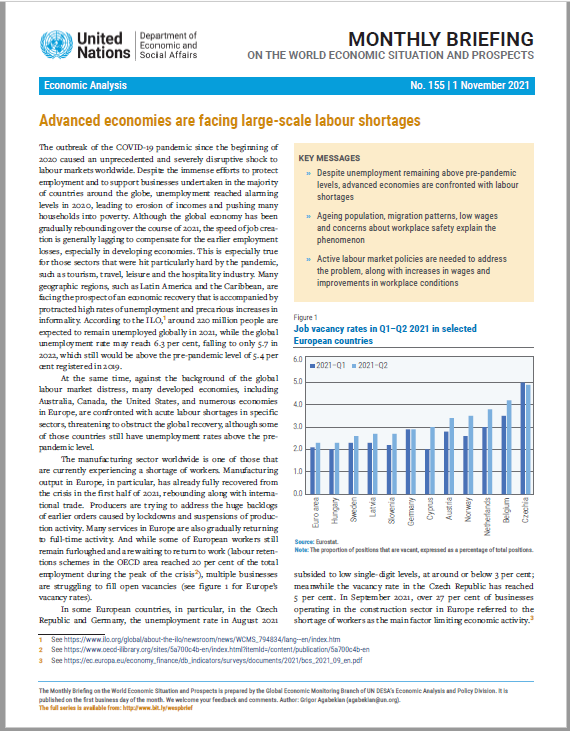units: Global Economic Monitoring Branch (GEMB)
Global Economic Monitoring Branch (GEMB)
1 June 2022
The war in Ukraine will significantly impact global efforts to deal with the climate emergency by driving up energy prices and placing energy security at the heart of policy making in many countries.
18 May 2022
Global growth prospects have weakened significantly amid the war in Ukraine, rising energy, food and commodity prices, soaring inflation and tightening monetary policy stances by major central banks.
9 May 2022
The World Economic Situation and Prospects as of mid-2022, set to be released on 18 May 2022, will delve into the multitude of local, regional, and global economic consequences of the current war in Ukraine. The war, which erupted in February 2022, has ...
3 May 2022
Inflation is rising in many developing countries, driven by higher energy and food prices, supply chain disruptions and, in some cases, release of pent-up demand. Many central banks have responded with significant interest rate hikes.
5 April 2022
The Ukraine war may lead to global, regional and national crises on multiple fronts: a refugee crisis; energy, metals and food price shocks; disruptions in global trade; and distress in financial markets.
1 March 2022
Forthcoming changes in US monetary policy will have significant impacts on countries’ net international investment positions, likely pushing some least developed countries to greater indebtedness.
1 February 2022
The world has emerged from the depths of a paralyzing economic crisis, but recovery remains fragile amid the lingering pandemic, persistent labour market challenges, ongoing supply-chain disruptions and rising inflation.
1 December 2021
Favourable terms of trade provide much needed policy room to combat the pandemic and advance transformative reforms that can sustainably reduce poverty and inequality.
1 November 2021
Despite unemployment remaining above pre-pandemic levels, advanced economies are confronted with labour shortages. Ageing population, migration patterns, low wages and concerns about workplace safety explain the phenomenon.

















Follow Us